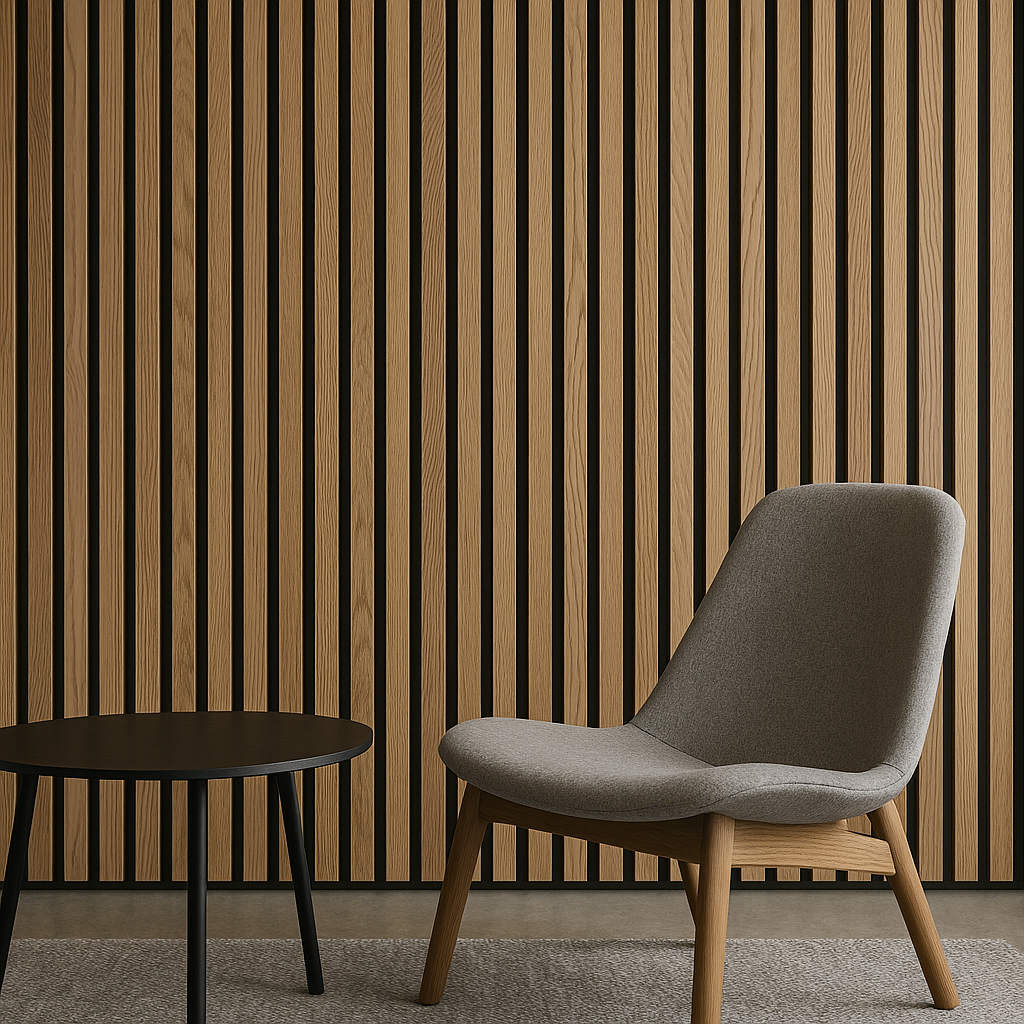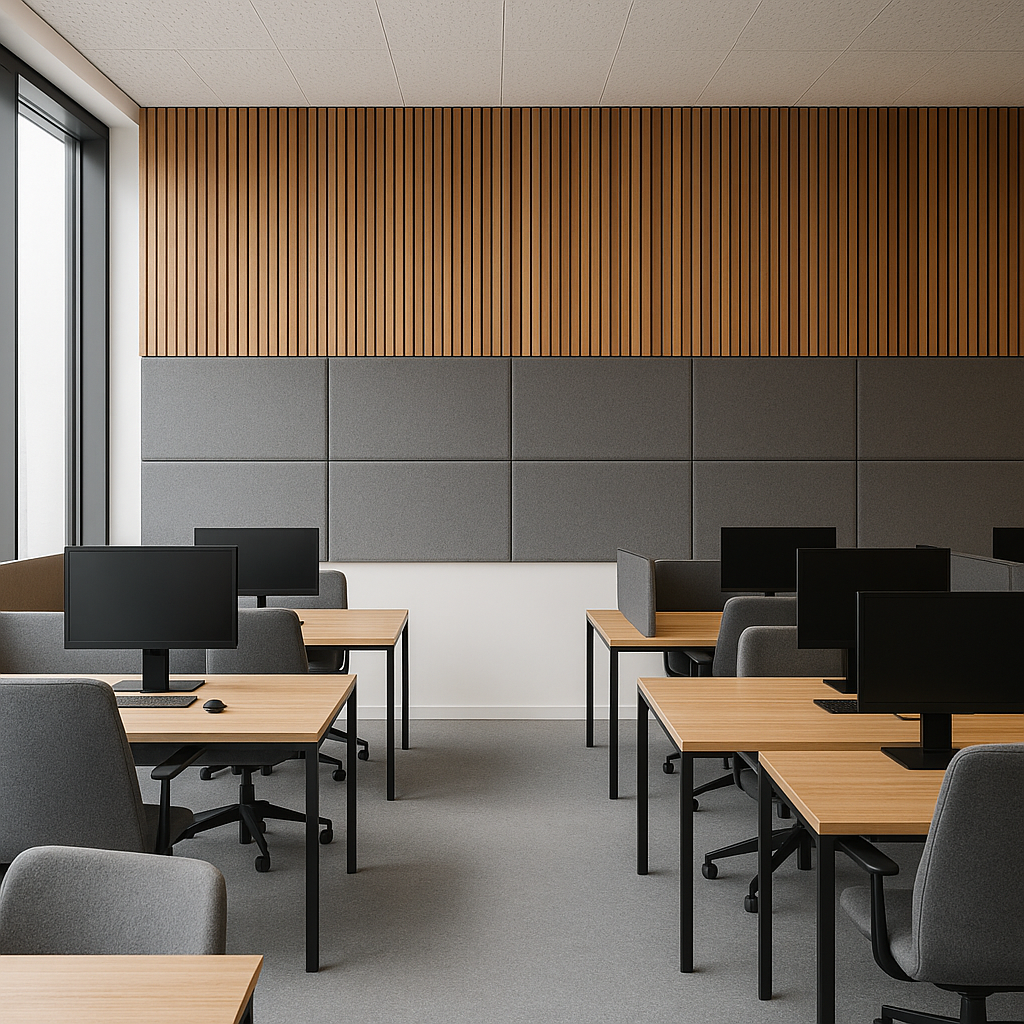In today’s busy world, managing noise levels in our homes, offices, and public spaces is more important than ever. Whether it’s an open-plan office buzzing with activity or a home theater where audio quality matters, acoustic wall panels provide an effective and stylish solution. These panels don’t just improve how a room sounds—they also influence how it feels, offering warmth, character, and acoustic control all in one.
They can seamlessly blend into minimalist environments or stand out as bold design features. As more people prioritize well-being and productivity in their spaces, acoustic solutions are becoming an essential element of modern design. In this comprehensive guide, we explore what acoustic wall panels are, how they work, their design benefits, and how to choose the right ones for your space.
What Are Acoustic Wall Panels?
Acoustic wall panels are specially engineered panels designed to absorb sound and reduce echo within a space. Made from sound-absorbing materials such as felt, foam, PET, wood, or fabric, these panels are typically mounted on walls to improve the acoustics of a room.
They are commonly used in:
- Open office environments
- Conference rooms
- Home theaters
- Recording studios
- Classrooms
- Restaurants and cafes
How Do Acoustic Wall Panels Work?
Sound waves bounce off hard surfaces like walls, ceilings, and floors. Without proper absorption, these reflections cause echoes and increase noise levels. Acoustic wall panels work by:
- Absorbing Mid and High-Frequency Sounds: Materials such as PET felt and acoustic foam reduce unwanted reverberations.
- Improving Sound Clarity: By reducing background noise and echo, panels improve speech intelligibility and audio clarity.
- Enhancing Privacy: Especially important in shared office environments, panels help contain conversations and reduce distractions.
Key Benefits of Acoustic Wall Panels
1. Noise Reduction
The primary function of acoustic panels is to reduce ambient noise. This is especially useful in large, open spaces where sound travels easily. By absorbing excess sound energy, these panels help minimize echo and reverberation that would otherwise cause discomfort. They contribute to clearer conversations and a more peaceful atmosphere. In environments like offices or restaurants, this can lead to better communication, increased productivity, and improved customer experiences.
2. Improved Focus and Productivity
In office settings, excessive noise can hinder concentration. Acoustic panels help create a quieter environment that supports better work output. Reduced auditory distractions mean employees can stay focused longer and experience fewer interruptions. Studies show that better acoustic environments contribute to cognitive performance and workplace satisfaction. This translates to a more efficient and contented workforce.
3. Aesthetic Appeal
Modern acoustic panels come in a variety of materials, colors, and styles. From minimalist felt panels to elegant wooden slats, these elements double as decorative features. They can enhance the visual appeal of any room, from professional office spaces to cozy residential interiors. Designers often use acoustic panels to introduce texture, pattern, and warmth into a space. With countless customization options, they serve both acoustic and artistic purposes.
4. Enhanced Audio Experience
For spaces like home cinemas and music rooms, sound clarity is crucial. Wall panels absorb disruptive sound reflections, enhancing the audio experience. By reducing echo and reverberation, panels help ensure that music, dialogue, and ambient sounds are heard as intended. This is especially important for content creators and audiophiles who rely on precise acoustics. Even casual listeners will notice the improvement in sound quality and immersion.
5. Customizable and Scalable
Panels can be customized to fit any space, and more can be added over time to meet evolving needs. Whether you’re furnishing a compact home studio or a sprawling corporate office, acoustic panels can be tailored in size, color, shape, and material. Modular systems make it easy to scale your acoustic treatment as your space or usage changes. This flexibility ensures long-term value and adaptability for dynamic environments.
Popular Types of Acoustic Wall Panels
1. Felt Acoustic Panels
Made from recycled PET materials, felt panels are eco-friendly and lightweight. They are ideal for modern interiors and can be printed or cut into various shapes.
2. Foam Panels
Common in studios and home theaters, these are highly effective at absorbing mid to high frequencies. However, they may be less decorative than other options.
3. Fabric-Wrapped Panels
These panels feature a wooden frame covered with acoustic insulation and a fabric exterior. They offer excellent performance and can be matched to any décor.
4. Wooden Slat Panels
Combining aesthetics with functionality, these panels feature wooden slats over an acoustic felt backing. They are ideal for upscale interiors and provide effective sound diffusion.
5. 3D Acoustic Tiles
With geometric or sculptural shapes, these panels add a bold design element while improving acoustics.
Where to Use Acoustic Wall Panels
• Open Offices: Reduce noise distractions and foster a focused work environment.
• Meeting Rooms: Improve clarity during conversations and video conferencing.
• Home Offices: Create a peaceful space for remote work and calls.
• Living Rooms and Bedrooms: Improve comfort and reduce unwanted noise.
• Restaurants and Cafes: Enhance ambiance by controlling noise levels.
• Studios and Theaters: Achieve optimal audio performance.
How to Choose the Right Acoustic Wall Panels
1. Identify the Acoustic Problem
Is your space suffering from echo, poor speech clarity, or general noise buildup? Knowing the issue will guide the right product selection.
2. Evaluate Room Size and Surface Area
Larger rooms or those with many hard surfaces may require more extensive treatment.
3. Consider Design Aesthetics
Choose a style that complements your interior design. Felt and wood panels offer distinct visual appeal.
4. Check NRC Ratings
Noise Reduction Coefficient (NRC) indicates how much sound a panel can absorb. Look for panels with NRC values of 0.7 and above for better performance.
5. Installation Options
Determine if the panels will be wall-mounted, adhesive-applied, or modular. Choose based on ease of installation and future adjustability.
Installation Tips
- Plan Layout First: Visualize where panels will have the most impact.
- Use Mounting Hardware or Adhesive: Choose the right installation method based on the panel weight and wall type.
- Balance Aesthetics and Function: Spread panels evenly and symmetrically for a pleasing look.
- Start With the First Reflection Points: These are usually the wall areas directly beside and behind the sound source.
Maintenance and Durability
Most acoustic wall panels are low-maintenance. Here are general care tips:
- Dust regularly with a soft cloth or vacuum with a brush attachment.
- Spot-clean fabric panels using mild soap and water.
- Avoid direct moisture exposure, especially for felt and wood panels.
Final Thoughts
Acoustic wall panels are more than just functional elements—they are a key component of thoughtful interior design. Whether you aim to reduce office noise, enhance your home theater, or simply improve daily comfort, choosing the right panels can transform your space.
By blending aesthetics with performance, acoustic wall panels offer a practical yet beautiful solution for modern acoustic challenges.




